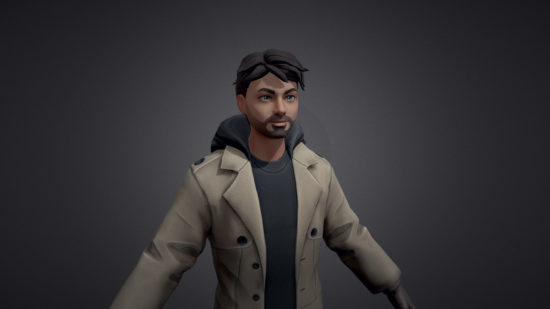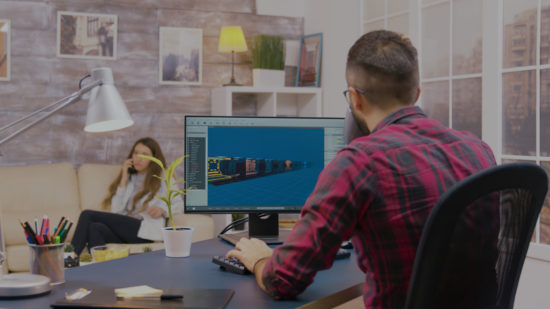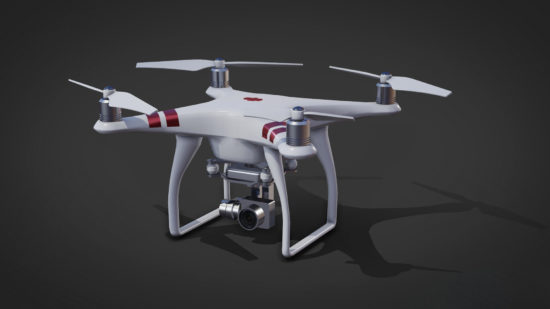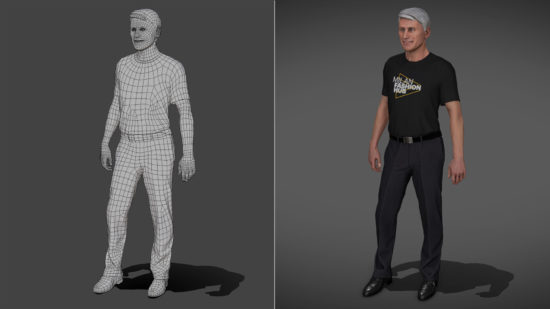Creating stunning visual effects demands precision, creativity, and advanced technology — all brought together by a skilled VFX studio. These studios handle projects ranging from blockbuster films to advertisements, delivering results that captivate audiences and elevate storytelling.
Collaboration forms the foundation of every project. VFX studios work closely with directors and production teams to ensure visual elements align seamlessly with the creative goals. Through this synergy, complex scenes are executed with clarity, meeting both artistic and practical requirements.
Modern VFX studios utilize cutting-edge software and tools to bring ideas to life. Their expertise extends beyond creating effects; they play a critical role in achieving consistency and polish across the entire production. From animating lifelike characters to designing breathtaking landscapes, their contributions drive the success of visual storytelling.
For those unfamiliar with how VFX studios operate, understanding their processes unveils the intricate efforts behind iconic visuals. Our exploration offers a closer look at the crucial elements shaping today’s visual media.
Visual Effects Meaning: Definitions & Core Concepts
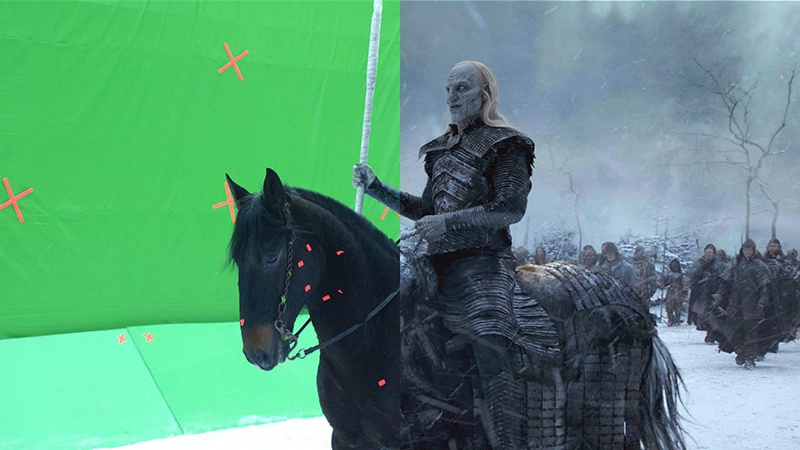
Understanding the meaning of visual effects is essential in modern media production. Visual effects, commonly known as VFX, encompass the digital processes used to create visuals that would be challenging or impossible to capture with standard filming techniques.
These range from grand, action-packed sequences like exploding buildings to subtle enhancements such as removing unwanted elements from a scene. VFX elevates storytelling by creating immersive, visually engaging content that captures an audience’s attention.
Defining Visual Effects in Modern Media
Visual effects have reshaped how stories are told, influencing the presentation of films, television, games, and advertisements. At its core, VFX combines artistic skill and technological innovation to create visuals that enhance or entirely replace real-world elements within a production. Unlike practical effects, which rely on physical props or live-action techniques, VFX is executed digitally, offering unmatched precision and creative flexibility.
Filmmakers often turn to VFX for its ability to craft vivid imagery that enhances narratives. Examples include animated creatures, digitally created environments, or realistic weather simulations seamlessly blending into live-action footage. These elements allow productions to surpass the limitations of physical sets and budgets, enabling directors to realize ambitious ideas.
In addition to entertainment, industries like education, healthcare, and advertising have embraced visual effects. Virtual demonstrations, interactive educational content, and impactful product ads now depend on the capabilities of VFX to engage diverse audiences. The accessibility of advanced VFX tools ensures even smaller-scale projects can benefit, leveling the playing field in media production.
How Visual Effects Differ from Traditional Methods
Key differences between visual effects and traditional methods lie in the techniques and outcomes they deliver. Traditional approaches, such as physical props, matte paintings, or miniature models, involve constructing and filming tangible elements on set. VFX, in contrast, integrates digital artistry to create or manipulate visuals during post-production, enabling flexibility and refinement unavailable in traditional methods.
VFX is often chosen for its adaptability. Digital environments, for instance, can be adjusted endlessly to match a director’s vision, while practical sets would require extensive rebuilding to achieve similar changes. For action-packed sequences, VFX ensures safety by replacing dangerous stunts with digital recreations that retain realism.
Another distinguishing factor is scalability. Traditional effects, like massive practical sets, often require significant resources and time. Visual effects allow for detailed depictions of expansive worlds or catastrophic events without the logistical hurdles of traditional setups. Additionally, VFX expands creative boundaries, facilitating seamless integration of fictional elements — like mythical creatures or futuristic cities — into live-action footage.
In modern media, the choice between VFX and traditional techniques depends on project goals, but their combination often delivers the best results. By understanding the strengths of each approach, creators can craft visuals that resonate deeply with their audience.
The Role of a VFX Artist in Creative Projects
VFX artists play a critical role in bringing creative visions to life. They combine technical expertise and artistic creativity to deliver compelling visuals that elevate storytelling. From crafting realistic effects to designing imaginary worlds, their work shapes the visual identity of modern media projects. Whether handling twelve animation styles or perfecting fine details, a VFX artist ensures every frame aligns with the production’s goals.
Core Responsibilities of a VFX Artist
The scope of a VFX artist’s work encompasses various responsibilities that demand both technical precision and creative problem-solving. Key duties include:
- Creating realistic effects. A VFX artist develops digital simulations for elements such as explosions, fire, water, or weather to match the project’s needs.
- Designing animated sequences. From lifelike character movements to understanding how to make a 3D animation, they ensure each sequence integrates seamlessly with the live-action footage.
- Enhancing existing visuals. Artists clean up, adjust, or refine raw footage, ensuring polished and professional results.
- Collaborating with directors and teams. Effective communication with directors and production teams ensures all effects align with the creative vision.
- Maintaining consistency. They ensure visual elements adhere to a unified style throughout the project.
- Integrating cutting-edge tools. VFX artists use advanced software to execute complex designs efficiently.
By taking on these responsibilities, VFX artists bring stories to life with striking visuals, ensuring every scene resonates with its audience. Their work bridges the gap between creative vision and technical execution, delivering results that captivate viewers.
Skills that Set a VFX Artist Apart
Several skills differentiate exceptional VFX artists from others in the field, particularly in areas like 3D environment design. These skills include:
- Mastery of software. Proficiency in industry-standard tools like Maya, Houdini, or Blender allows for versatile and efficient work.
- Creative problem-solving. A unique ability to resolve challenges, whether designing complex effects or meeting strict deadlines, ensures seamless project execution.
- Attention to detail. VFX artists must spot and correct even the smallest imperfections in their work.
- Collaboration and communication. Working with directors, producers, and other team members requires strong interpersonal skills to align goals and ensure cohesive visuals.
- Adaptability to trends. Staying updated with new technologies and techniques keeps their work competitive and relevant.
Equipped with these skills, a VFX artist transforms creative ideas into visually stunning realities, leaving a lasting impact on the project’s artistic and technical achievements. They don’t have to specialize in everything, like 3D modeling, texturing, or 3D environment design. However, their contributions ensure that every detail aligns with the intended vision, creating a seamless and engaging experience for the audience.
Special Effects vs. Visual Effects
| Aspect | Special Effects | Visual Effects |
| Definition | Physical effects created on set using practical tools and techniques. | Digital effects crafted during post-production using software. |
| Execution | Requires physical props, mechanical rigs, and live-action setups. | Achieved using 3D modeling, animation, and compositing tools. |
| Flexibility | Limited; changes are costly and time-consuming. | Highly flexible; digital elements can be modified easily during production. |
| Cost | Often requires significant upfront investment in materials and labor. | Costs depend on the complexity of the digital work but can scale efficiently. |
| Examples | Explosions, weather effects created with rigs, and mechanical stunts. | Digital landscapes, animated creatures, and simulated destruction. |
Comparing Techniques: Practical and Digital
| Category | Practical Techniques | Digital Techniques |
| Realism | Offers authentic textures and interactions when filmed. | Simulates realistic visuals with detailed digital rendering. |
| Safety | Limited by the risks associated with live-action setups and stunts. | Provides safer alternatives for dangerous sequences through simulations. |
| Time Efficiency | Requires detailed preparation and on-set execution, often lengthening schedules. | Streamlines workflows by enabling iterative adjustments during post-production. |
| Technological Dependence | Relies more on mechanical expertise and physical craftsmanship. | Requires advanced software, hardware, and skilled digital artists. |
| Versatility | Restricted by physical constraints of the environment or tools available. | Offers unlimited creative freedom to visualize any concept. |
Why the Debate Matters in Production
The discussion around special and visual effects holds significance due to the unique advantages each offers to filmmakers. Special effects are often valued for their tangible, real-world feel, making them ideal for productions where authenticity is essential. On the other hand, visual effects open doors to unlimited creativity, enabling directors to explore concepts impossible to achieve physically.
Choosing between these approaches impacts budgets, timelines, and the overall visual tone of the project. Productions with smaller budgets might lean on practical effects for cost efficiency, while larger-scale endeavors tend to integrate both methods for a balanced approach.
Blending these techniques often yields the most impactful results. For instance, a scene might use practical elements to ground visuals in reality while enhancing them digitally in post-production. This hybrid strategy allows creators to take advantage of the strengths of each method. By carefully evaluating the needs of their projects, filmmakers ensure that every effect aligns with their vision, both artistically and logistically.
Understanding 3D and 2D Visual Effects
3D and 2D visual effects play distinct yet complementary roles in media production. While 3D effects create immersive, lifelike environments, 2D effects bring subtle enhancements that add depth to narratives. From blockbuster films to animated shorts, these techniques shape how stories are visually experienced.
3D Visual Effects Shaping Realistic Environments
3D visual effects are essential for crafting detailed, immersive settings that feel real to audiences. These effects rely on advanced modeling, rendering, and animation tools to simulate environments, objects, and characters with depth and realism. They enable filmmakers to create everything from sprawling cityscapes to alien planets, all while ensuring consistent interaction with live-action elements.
Unlike 2D effects, 3D effects excel in creating objects and environments with dimensionality. For example, a battle sequence in a film can feature fully animated characters and objects moving seamlessly within a digitally constructed arena. These effects also shine in applications like product visualization and architectural simulations, where precision and realism are key.
Frame-by-frame animation plays a role in refining 3D visual effects, ensuring fluid and natural motion for characters or objects. By crafting each frame with meticulous detail, animators achieve lifelike behaviors that connect with viewers emotionally. The scalability of 3D effects also allows productions to balance creative ambition with available resources, making them a go-to choice for visually complex projects.
2D Visual Effects Adding Finesse to Storytelling
2D visual effects enhance storytelling by focusing on detail, style, and mood. Often used to overlay graphics, adjust color tones, or create stylized animations, these effects complement live-action footage without dominating the scene. Common applications include compositing, motion graphics, and subtle visual enhancements like glows or transitions.
In animated projects, a frame by frame animation frequently incorporates 2D effects to bring characters and scenes to life. This detailed process involves crafting each frame individually to achieve seamless movement. For example, in a hand-drawn animation, effects like fire, water, or smoke are created frame by frame to match the overall artistic vision.
Unlike 3D effects, which prioritize realism, 2D visual effects often highlight creative expression. They are particularly useful in projects requiring a more illustrative or abstract approach, such as music videos or promotional content. By integrating 2D elements thoughtfully, filmmakers can add layers of depth and nuance to their stories, enhancing the emotional connection with audiences. Whether used independently or alongside 3D effects, 2D effects remain a powerful tool for visual storytelling.
Hire expert VFX artists from a dedicated 3D-Ace team. Contact us!
Visual Effects Software That Powers Creativity
The right software transforms a VFX artist’s vision into reality. Professional-grade tools provide the precision and flexibility required for creating compelling visual effects. From rendering lifelike animations to perfecting intricate details, these programs enable seamless integration of creative ideas with technical execution. Understanding the capabilities of leading software helps optimize workflows and achieve stunning results.
The Best Visual Effects Software Used by Professionals
VFX professionals rely on cutting-edge software to deliver high-quality visuals. Each program offers unique features tailored to specific production needs. Below are some of the top tools used in the industry:
- Autodesk Maya. Known for its robust 3D modeling, animation, and rendering capabilities, it is widely used in film and television.
- Houdini. Renowned for its procedural generation, Houdini excels at creating dynamic simulations like explosions, water, and smoke.
- Blender. An open-source platform that provides a complete suite for 3D creation, including modeling, animation, and compositing.
- Adobe After Effects. Ideal for motion graphics, compositing, and adding visual effects to post-production projects.
- Nuke. A powerful compositing tool that integrates seamlessly into VFX workflows, enabling complex layer management.
- Unreal Engine. Originally designed for gaming, it is increasingly used for real-time rendering and creating virtual environments in films.
Proficiency with these visual effects software tools enables VFX artists to streamline workflows and turn ambitious creative ideas into visually compelling realities. The right software not only enhances efficiency but also empowers artists to push creative boundaries. They can tackle complex projects precisely with access to cutting-edge features while maintaining high-quality standards.
How Software Shapes the Final Visual Effect
The software determines the quality, speed, and flexibility of VFX production. The impact can be categorized into several critical aspects:
- Workflow efficiency. Advanced tools streamline modeling, texturing, and rendering processes, enabling faster turnaround times.
- Precision in design. Programs like Maya and Houdini allow creators to refine details, ensuring every effect aligns with the project’s vision.
- Seamless integration. The software ensures compatibility across departments, allowing VFX teams to collaborate with editors, sound designers, and animators.
- Real-time previews. Platforms like Unreal Engine provide real-time rendering capabilities, enabling immediate feedback and adjustments.
- Scalability. Tools can handle complex projects, from small-scale edits to large-scale productions with thousands of effects layers.
- Innovation potential. With regular updates and AI-powered features, leading software continually expands creative possibilities.
Combining advanced features and user-friendly interfaces empowers artists to shape effects confidently. Choosing the right software is essential for delivering visuals that resonate with audiences and align with the production’s goals.
Insights into the Visual Effects Industry
The visual effects industry continues to evolve, driven by technological advancements and a growing demand for immersive content. Innovations like real-time rendering and virtual production reshape workflows, while companies face increasing pressure to balance creativity with efficiency. By examining trends and challenges, it’s possible to gain a clearer understanding of the factors influencing this dynamic field.
Emerging Trends in the Visual Effects Market
The VFX industry is experiencing rapid transformation, marked by several key trends:
- Real-time rendering adoption. Tools like Unreal Engine enable faster workflows, allowing filmmakers to visualize scenes instantly and make adjustments in real-time.
- Virtual production growth. Integrating live-action and digital elements on set is becoming more common, streamlining collaboration and reducing post-production timelines.
- Increased demand for streaming content. Platforms like Netflix and Amazon Prime require high-quality VFX to meet their expanding libraries, driving demand across studios.
- AI-powered workflows. Artificial intelligence automates repetitive tasks such as rotoscoping and color correction, freeing artists to focus on creative aspects.
- Sustainability in VFX. As productions grow, companies adopt eco-friendly practices, such as cloud computing and energy-efficient hardware, to reduce their environmental footprint.
These trends highlight the innovative directions the VFX industry is taking, enabling studios to deliver better results while adapting to evolving audience expectations.
Challenges Visual Effects Companies Face Today
While innovation fuels the industry, VFX companies encounter significant challenges that impact production quality and timelines:
- Tight deadlines. Studios often work on multiple projects simultaneously, leading to intense pressure to meet overlapping schedules.
- Budget constraints. High-quality visual effects require significant resources, and balancing costs with client expectations is a constant struggle.
- Talent shortages. With increasing demand for skilled professionals, many studios face difficulty recruiting and retaining top-tier VFX artists.
- Rapidly changing technology. Keeping up with advancements like real-time rendering or virtual production necessitates continuous investment in training and tools.
- Outsourcing dynamics. While outsourcing reduces costs, it can introduce communication gaps and quality control issues, especially across global teams.
Addressing these challenges requires strategic planning, strong collaboration, and a commitment to innovation. By navigating these obstacles effectively, VFX companies can continue to thrive in a competitive market and maintain the high standards audiences expect.
Why Businesses Should Care About Visual Effects
Visual effects are no longer limited to entertainment; they have become a strategic tool for businesses across industries. Companies use VFX to craft memorable campaigns, enhance product demonstrations, and communicate their brand story innovatively. As audiences increasingly favor engaging visuals, investing in VFX offers businesses a competitive edge in capturing attention and driving impact.
Visual Effects as a Tool for Brand Storytelling
Incorporating visual effects into brand storytelling allows businesses to captivate audiences and communicate complex ideas effectively. Through VFX, companies can create immersive advertisements, visually striking product launches, or interactive experiences that leave lasting impressions.
- Creating unique narratives. VFX enables businesses to visualize abstract concepts, such as future possibilities or innovative product features, in ways that resonate with viewers.
- Enhancing emotional connections. Dynamic visuals engage audiences emotionally, fostering stronger relationships between customers and brands.
- Boosting campaign reach. High-quality VFX makes marketing materials more shareable, amplifying their visibility across social media and other digital platforms.
- Elevating product demonstrations. Using VFX for animated walkthroughs or virtual try-ons provides customers with a deeper understanding of offerings.
Businesses that integrate VFX into their marketing strategies not only stand out from competitors but also build a stronger, more cohesive brand identity.
Cost Versus Impact Analysis of Investing in Visual Effects
Investing in visual effects requires carefully considering the balance between expenses and the value they generate. While high-quality VFX can be costly, the returns often justify the investment when planned strategically.
- Cost factors. Expenses include software, skilled professionals, and the complexity of the effects needed, with costs varying by project scale.
- Immediate benefits. VFX improves engagement, making campaigns more impactful and increasing customer retention rates.
- Long-term value. High-quality visuals contribute to brand longevity by ensuring materials remain visually appealing.
- Maximizing ROI. Businesses can optimize their budget by targeting specific audiences, choosing the right platforms, and leveraging scalable VFX solutions.
Understanding the potential return on investment helps businesses make informed decisions about incorporating VFX into their strategies. Whether enhancing a single campaign or transforming an entire brand image, the impact of visual effects often outweighs the initial costs, creating significant value over time.
Hire Professional VFX Artists from 3D-Ace
When your project demands stunning visual effects, partnering with 3D-Ace offers access to a team of skilled professionals ready to deliver exceptional results. As a professional art outsourcing studio, we provide tailored VFX solutions for video games and advertising. Our artists combine technical expertise and creativity to reimagine your vision.
Whether you need realistic 3D environments, character animations, or post-production enhancements, our team works closely with you to meet deadlines and exceed expectations. With cutting-edge tools and years of experience, we handle projects of any complexity, maintaining the highest quality standards.
Don’t leave your visual effects to chance — contact us now to collaborate with a reliable partner who can elevate your project and captivate your audience.
